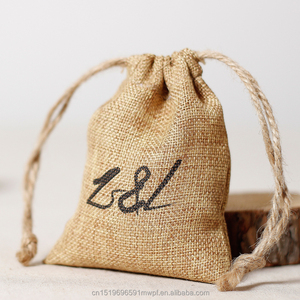In a world where environmental sustainability is Eco Jute Bag is paramount importance, jute bags have emerged as a versatile and eco-friendly alternative for packaging. These bags, made from the natural fibers of the jute plant, have gained immense popularity not only for their environmental benefits but also for their stylish designs and diverse applications. In this article, we will explore the world of jute bags for packaging, delving into their composition, design ideas, market analysis, and potential profitability in businesses.
What is a Jute Bag?
To understand the significance of jute bags for packaging, let’s start by exploring what exactly a jute bag is. Jute bags are eco-friendly and sustainable bags made from the fibers of the jute plant (Corchorus olitorius and Corchorus capsularis). Jute is a long, soft, and shiny vegetable fiber that can be spun into coarse, strong threads. These threads are then woven to create jute fabric, which is used to make a wide range of products, including bags.
The Composition of Jute Bags
Jute bags are known for their durability and biodegradability. They are primarily composed of jute fibers, which are 100% natural and renewable. This makes them an excellent choice for eco-conscious individuals and businesses. Unlike plastic bags, which can take hundreds of years to decompose, jute bags break down naturally, causing minimal harm to the environment.
One of the most appealing aspects of jute bags is their versatility in design. From red jute bags to black ones, and even blue and personalized jute bags, the possibilities are endless. Here are some creative jute bag design ideas


Eco-inspired Designs: Showcase your commitment to the environment with designs that feature leaves, trees, or eco-friendly slogans.
Minimalistic Elegance: Keep it simple with a classic, minimalist jute bag design, perfect for high-end brands.
Artistic Drawings: You can get artistic by adding hand-drawn or printed designs to your jute bags. Consider creating a drawing of a jute bag itself to add a touch of uniqueness.
Branding with Style: For businesses, consider branded jute bags with your company logo and message. This adds a professional touch to your packaging.


Jute bags come in various sizes to suit different purposes. From small and compact jute bags for daily essentials to large 100 kg jute bags for heavy-duty use, there’s a size for every need. Some common uses of jute bags include:
Grocery Shopping: Replace single-use plastic bags with sturdy jute bags for your groceries.
Gift Packaging: Jute bags make beautiful gift packaging for special occasions.
Promotional Items: Businesses often use jute bags as promotional items at events and trade shows.
Storage: Use jute bags for organizing and storing items at home or in the office.
The jute bag market has witnessed significant growth in recent years due to the rising awareness of environmental issues and the shift towards sustainable alternatives. In Nigeria, the demand for jute bags has been steadily increasing, driven by the desire to reduce plastic waste and promote eco-friendly practices.
However, it’s essential to conduct a thorough market analysis before entering the jute bag business. Consider factors such as competition, pricing strategies, and target demographics. Researching jute bag production in Nigeria and finding reliable jute bag suppliers is crucial to establishing a successful venture.
Profitability of Jute Bag Business
Is a jute bag business profitable? The answer largely depends on various factors, including your business strategy, marketing efforts, and product quality. Given the growing demand for eco-friendly alternatives and the versatility of jute bags, there is considerable potential for profitability in this business. However, success will depend on your ability to offer unique designs, competitive pricing, and effective marketing strategies.
Understanding the production process is essential for anyone considering entering the jute bag business. The jute bag making process involves several steps, including:
Harvesting Jute: Jute fibers are extracted from the jute plant, usually harvested during the monsoon season.
Retting: The harvested jute stems are soaked in water to allow the fibers to separate from the woody stalks.
Breaking and Scutching: The fibers are then extracted from the jute stalks through a process called breaking and scutching.
Carding: The extracted fibers are combed to remove impurities and create a smooth, even texture.
Spinning: The carded fibers are spun into yarns, which are used to weave jute fabric.
Weaving: Jute fabric is woven using traditional or modern weaving techniques, depending on the desired design.
Cutting and Stitching: The jute fabric is cut and stitched into the desired bag shape.
Printing: Designs, logos, or artwork can be printed onto the jute bags for customization.
Jute Bag Suppliers and Manufacturers
Finding reliable jute bag suppliers and manufacturers is crucial for a successful jute bag business. You can search for jute bag manufacturers near you or consider partnering with suppliers in countries known for their jute production expertise, such as India and Bangladesh.
In a world where sustainability and Eco Jute Bag-friendliness are becoming increasingly important, jute bags for packaging offer a promising alternative to traditional plastic bags. These bags, made from natural jute fibers, not only reduce environmental impact but also provide a canvas for creative design ideas. The jute bag market is on the rise, presenting opportunities for both consumers and entrepreneurs alike. Whether you’re looking to make a personal eco-friendly choice or considering entering the jute bag business, the future of packaging is undoubtedly greener with jute bags.

